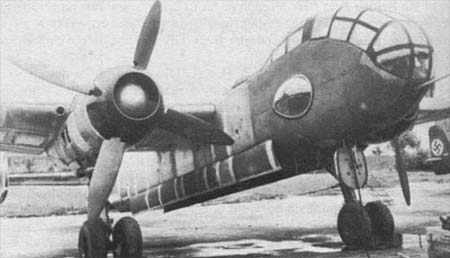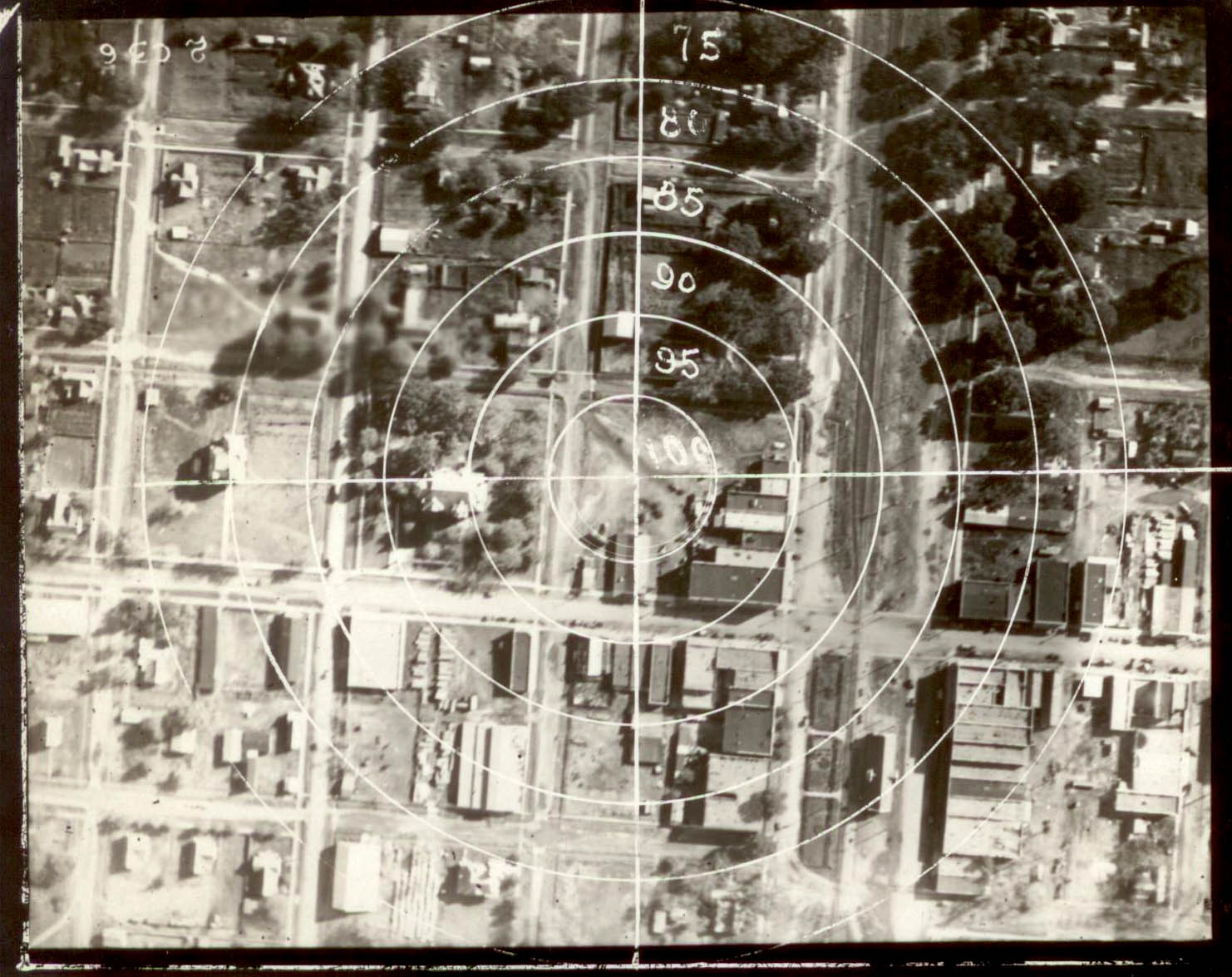|
Me 210
The Messerschmitt Me 210 was a Nazi Germany, German heavy fighter and ground-attack aircraft of World War II. Design started before the war, as a replacement for the Messerschmitt Bf 110, Bf 110. The first examples were ready in 1939, but they proved to have unacceptably poor flight characteristics due to serious Planform (aeronautics), wing planform and fuselage design flaws. A large-scale operational testing program throughout 1941 and early 1942 did not cure the type's problems. The design entered limited service in 1942, but was soon replaced by the Messerschmitt Me 410 Hornisse, a further development of the Me 210. The failure of the Me 210's development program meant the ''Luftwaffe'' was forced to continue operating the Bf 110 after it had become outdated, despite mounting losses. Design and development Messerschmitt designers had started working on an upgrade of the Bf 110 in 1937, before the production version of the Bf 110 had even flown. In late 1938, the Bf 110 was j ... [...More Info...] [...Related Items...] OR: [Wikipedia] [Google] [Baidu] |
WikiProject Aircraft
A WikiProject, or Wikiproject, is a Wikimedia movement affinity group for contributors with shared goals. WikiProjects are prevalent within the largest wiki, Wikipedia, and exist to varying degrees within sister projects such as Wiktionary, Wikiquote, Wikidata, and Wikisource. They also exist in different languages, and translation of articles is a form of their collaboration. During the COVID-19 pandemic, CBS News noted the role of Wikipedia's WikiProject Medicine in maintaining the accuracy of articles related to the disease. Another WikiProject that has drawn attention is WikiProject Women Scientists, which was profiled by '' Smithsonian'' for its efforts to improve coverage of women scientists which the profile noted had "helped increase the number of female scientists on Wikipedia from around 1,600 to over 5,000". On Wikipedia Some Wikipedia WikiProjects are substantial enough to engage in cooperative activities with outside organizations relevant to the field at issue. For e ... [...More Info...] [...Related Items...] OR: [Wikipedia] [Google] [Baidu] |
Arado Ar 240
The Arado Ar 240 was a German twin-engine, multi-role heavy fighter aircraft, developed for the ''Luftwaffe'' during World War II by Arado Flugzeugwerke. Its first flight was in 1940, but problems with the design hampered development, and it remained only marginally stable throughout the prototype phase. The project was eventually cancelled, with the existing airframes used for a variety of test purposes. Design and development The Ar 240 came about as the response to a 1938 request for a much more capable second-generation heavy fighter to replace the Messerschmitt Bf 110, which was becoming outdated. Both Arado and Messerschmitt responded. Messerschmitt's response, the Me 210, was a totally new design, but thanks to Messerschmitt's experience with the ''Zerstörer'' ("Destroyer") concept, it would be able to enter service quickly. Arado's design was considerably more ambitious for the smaller firm, a dream project of Arado's chief designer, Walter Blume, since the mid-1930s. ... [...More Info...] [...Related Items...] OR: [Wikipedia] [Google] [Baidu] |
Gun Turret
A gun turret (or simply turret) is a mounting platform from which weapons can be fired that affords protection, visibility and ability to turn and aim. A modern gun turret is generally a rotatable weapon mount that houses the crew or mechanism of a projectile-firing weapon and at the same time lets the weapon be aimed and fired in some degree of azimuth and elevation (cone of fire). Description Rotating gun turrets protect the weapon and its crew as they rotate. When this meaning of the word "turret" started being used at the beginning of the 1860s, turrets were normally cylindrical. Barbettes were an alternative to turrets; with a barbette the protection was fixed, and the weapon and crew were on a rotating platform inside the barbette. In the 1890s, armoured hoods (also known as "gun houses") were added to barbettes; these rotated with the platform (hence the term "hooded barbette"). By the early 20th Century, these hoods were known as turrets. Modern warships have gu ... [...More Info...] [...Related Items...] OR: [Wikipedia] [Google] [Baidu] |
MG 131 Machine Gun
The MG 131 (shortened from German: ''Maschinengewehr'' 131, or "Machine gun 131") was a German 13 mm caliber machine gun developed in 1938 by Rheinmetall-Borsig and produced from 1940 to 1945. The MG 131 was designed for use at fixed, flexible or turreted, single or twin mountings in Luftwaffe aircraft during World War II. It was one of the smallest, if not the smallest among the heavy machine guns of that conflict, with a weight of 16.6 kilograms (37 lb,) less than 60% of the M2 Browning or the Breda-SAFAT machine gun. Despite this, the MG 131 was a rapid fire weapon with an elevated firepower for its mass. It was equipped with HEI ammunition. Its nearest contemporary equivalent may have been the Japanese Ho-103, itself based on the earlier American M1921 Browning machine gun. The other main Axis automatic weapon of similar caliber, the Italian Breda 12.7 mm was around 13 kg heavier and bigger, while slower by at least 150 rpm. This small size allowed them to be mount ... [...More Info...] [...Related Items...] OR: [Wikipedia] [Google] [Baidu] |
Bundesarchiv Bild 101I-445-1861-19, Nordafrika, Arbeit An Bordwaffen Einer Me 210-410
, type = Archive , seal = , seal_size = , seal_caption = , seal_alt = , logo = Bundesarchiv-Logo.svg , logo_size = , logo_caption = , logo_alt = , image = Bundesarchiv Koblenz.jpg , image_caption = The Federal Archives in Koblenz , image_alt = , formed = , preceding1 = , preceding2 = , dissolved = , superseding1 = , superseding2 = , agency_type = , jurisdiction = , status = Active , headquarters = PotsdamerStraße156075Koblenz , coordinates = , motto = , employees = , budget = million () , chief1_name = Michael Hollmann , chief1_position = President of the Federal Archives , chief2_name = Dr. Andrea Hänger , chief2_position ... [...More Info...] [...Related Items...] OR: [Wikipedia] [Google] [Baidu] |
Autocannon
An autocannon, automatic cannon or machine cannon is a fully automatic gun that is capable of rapid-firing large-caliber ( or more) armour-piercing, explosive or incendiary shells, as opposed to the smaller-caliber kinetic projectiles (bullets) fired by a machine gun. Autocannons have a longer effective range and greater terminal performance than machine guns, due to the use of larger/heavier munitions (most often in the range of , but bigger calibers also exist), but are usually smaller than tank guns, howitzers, field guns or other artillery. When used on its own, the word "autocannon" typically indicates a non-rotary weapon with a single barrel. When multiple rotating barrels are involved, such a weapon is referred to as a "rotary autocannon" or occasionally "rotary cannon", for short (particularly on aircraft). Autocannons are heavy weapons that are unsuitable for use by infantry. Due to the heavy weight and recoil Recoil (often called knockback, kickback o ... [...More Info...] [...Related Items...] OR: [Wikipedia] [Google] [Baidu] |
Bombsight
A bombsight is a device used by military aircraft to drop bombs accurately. Bombsights, a feature of combat aircraft since World War I, were first found on purpose-designed bomber aircraft and then moved to fighter-bombers and modern tactical aircraft as those aircraft took up the brunt of the bombing role. A bombsight has to estimate the path the bomb will take after release from the aircraft. The two primary forces during its fall are gravity and air drag, which make the path of the bomb through the air roughly parabolic. There are additional factors such as changes in air density and wind that may be considered, but they are concerns only for bombs that spend a significant portion of a minute falling through the air. Those effects can be minimized by reducing the fall time by low-level bombing or by increasing the speed of the bombs. Those effects are combined in the dive bomber. However, low-level bombing also increases the danger to the bomber from ground-based defence ... [...More Info...] [...Related Items...] OR: [Wikipedia] [Google] [Baidu] |
Bomb Bay
The bomb bay or weapons bay on some military aircraft is a compartment to carry bombs, usually in the aircraft's fuselage, with "bomb bay doors" which open at the bottom. The bomb bay doors are opened and the bombs are dropped when over the target or at a specified launching point. History and function Bomb bays were born of necessity. Early military aircraft suffered severe aerodynamic drag (which would further slow down the already lumbering bomb-laden aircraft) with bombs hanging from the wings or below the fuselage, so military aviation designers moved the bombs inside the aircraft. Before the introduction of stealth technology bomb bays were mostly used by dedicated bomber aircraft; in fighters and attack airplanes bombs and rockets were hung from the wings or fuselage on pylons. Notable exceptions are the F-101, F-102 and F-106 interceptor aircraft, all of which had bays used to store missiles, or other weapons stores. Today many designers have moved previously "e ... [...More Info...] [...Related Items...] OR: [Wikipedia] [Google] [Baidu] |
Fuselage
The fuselage (; from the French ''fuselé'' "spindle-shaped") is an aircraft's main body section. It holds crew, passengers, or cargo. In single-engine aircraft, it will usually contain an engine as well, although in some amphibious aircraft the single engine is mounted on a pylon attached to the fuselage, which in turn is used as a floating hull. The fuselage also serves to position the control and stabilization surfaces in specific relationships to lifting surfaces, which is required for aircraft stability and maneuverability. Types of structures Truss structure This type of structure is still in use in many lightweight aircraft using welded steel tube trusses. A box truss fuselage structure can also be built out of wood—often covered with plywood. Simple box structures may be rounded by the addition of supported lightweight stringers, allowing the fabric covering to form a more aerodynamic shape, or one more pleasing to the eye. Geodesic construction Geo ... [...More Info...] [...Related Items...] OR: [Wikipedia] [Google] [Baidu] |
Bundesarchiv Bild 101I-363-2271-21, Frankreich, Flugzeug Me 210, Bomben
, type = Archive , seal = , seal_size = , seal_caption = , seal_alt = , logo = Bundesarchiv-Logo.svg , logo_size = , logo_caption = , logo_alt = , image = Bundesarchiv Koblenz.jpg , image_caption = The Federal Archives in Koblenz , image_alt = , formed = , preceding1 = , preceding2 = , dissolved = , superseding1 = , superseding2 = , agency_type = , jurisdiction = , status = Active , headquarters = PotsdamerStraße156075Koblenz , coordinates = , motto = , employees = , budget = million () , chief1_name = Michael Hollmann , chief1_position = President of the Federal Archives , chief2_name = Dr. Andrea Hänger , chief2_position ... [...More Info...] [...Related Items...] OR: [Wikipedia] [Google] [Baidu] |
Junkers Ju 88
The Junkers Ju 88 is a German World War II ''Luftwaffe'' twin-engined multirole combat aircraft. Junkers Aircraft and Motor Works (JFM) designed the plane in the mid-1930s as a so-called ''Schnellbomber'' ("fast bomber") that would be too fast for fighters of its era to intercept. It suffered from technical problems during its development and early operational periods but became one of the most versatile combat aircraft of the war. Like a number of other ''Luftwaffe'' bombers, it served as a bomber, dive bomber, night fighter, torpedo bomber, reconnaissance aircraft, heavy fighter and at the end of the war, as a flying bomb. Despite a protracted development, it became one of the ''Luftwaffe''s most important aircraft. The assembly line ran constantly from 1936 to 1945 and more than 15,000 Ju 88s were built in dozens of variants, more than any other twin-engine German aircraft of the period. Throughout production the basic structure of the aircraft remained unchanged.Angelucci a ... [...More Info...] [...Related Items...] OR: [Wikipedia] [Google] [Baidu] |







.jpg)